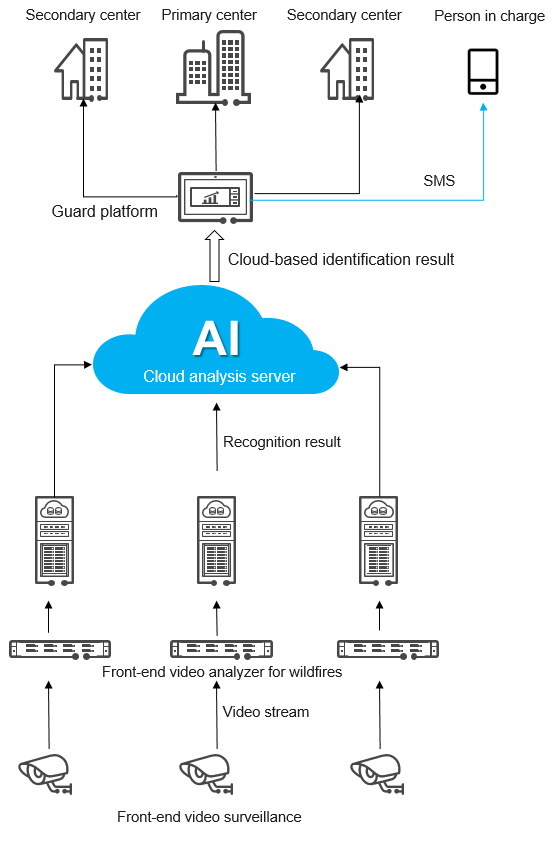Harnessing the Power of AI for Forests
Enterprise products, solutions & services
The past year has been full of headlines on environmental disasters. Wildfires have ravaged the Amazon rainforest and Australia, causing tremendous environmental damage. The per capita forest area and reserves of China are only 20% and 12% of the world average respectively. 2,345 wildfires affected 13,505 hectares of forests in 2019 alone. The catastrophic consequences of losing our forests threaten the world as we know it.
Prevention is vital in minimizing the damage of wildfires. Effective analysis, monitoring, and alerts can stop fires before they start. The rapid advances in artificial intelligence (AI) are playing an important role in forest management, fire hazard detection, and rescue.
Huawei and Enbo Technology have come together to develop an intelligent solution for wildfire prevention, harnessing the power of AI innovation to protect our environment.
Time is the critical factor in wildfire prevention, and early detection is crucial. Wildfires generally develop in two phases. The first phase mainly consists of underwood fires, which are less intense and easier to extinguish. However, underwood fires then develop into canopy fires in the second phase. Canopy fires are significantly more dangerous due to their strength and are difficult or even sometimes impossible to extinguish. An early sign of an underwood fire is smoke. Early smoke detection helps stop fires before they go out of control.
Huawei and Enbo have created an industry-leading AI solution with device-edge-cloud collaboration for early smoke detection. The solution combines software-defined cameras (SDCs), Atlas intelligent products for edge computing, and Kunpeng-powered cloud services to implement smoke identification at different levels. Raw videos are analyzed by devices, primary analysis occurs at the edge, and secondary analysis happens on the cloud for precise smoke identification and immediate fire prevention.
1) Device: SDCs monitor forests to produce mass data for analysis. Hardware performance upgrades, including 8-megapixel devices for monitoring with visible light and near-infrared photography, cover a wider range of distance. This increased scope provides comprehensive data support for precise wildfire detection.
2) Edge: The monitoring command center directly connects to front-end monitoring devices. The Atlas 800 server provides edge computing to process multiple services and analyze multi-channel data simultaneously. Atlas 800 also provides the 1-to-N recognition feature to greatly streamline wildfire alerts.
3) Cloud: High-density elastic computing is globally deployed. The Atlas 800 provides accurate identification with an inference platform for deep learning and provides video hardware acceleration for secondary smoke and fire identification.

The device-edge-cloud model is no longer a single point of intelligent innovation. Instead, it leverages the flexible allocation of computing power and collaboration to maximize the applications of edge and cloud computing. As a result, systems constantly evolve to better understand the features and objects of wildfire prevention. Cloud monitoring creates a monitoring architecture with device-edge-cloud collaboration. Guangdong province has used this architecture to gradually implement collaborative wildfire management for better management and quicker response throughout the province.
The solution of Huawei and Enbo goes beyond simple monitoring by powering the system with AI for greater speed, precision, and stability for wildfire prevention. This solution benefits ecosystems, communities, and economies.
The solution has been applied throughout Guangdong province in pilot programs to upgrade and reconstruct the original system for wildfire prevention. It now only takes one person to monitor and manage nearly 1,000 video cameras. The new AI system surpasses the old solution for thermal imaging in patrol cycles, alarm speed, and recognition accuracy. The patrol cycle has gone from 3 to 10 minutes, and fires are detected two hours earlier on average. AI provides better protection for both the environment and the economy.
Huawei strives to provide pervasive intelligence for inclusive AI power. AI is redefining how we solve problems and helping us to better protect the world.